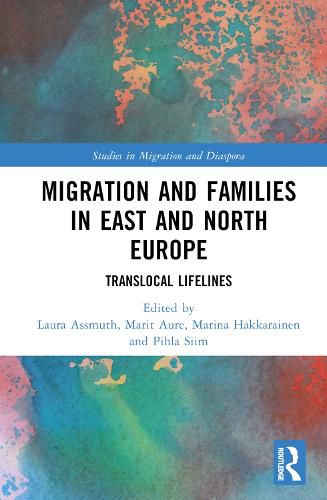Readings Newsletter
Become a Readings Member to make your shopping experience even easier.
Sign in or sign up for free!
You’re not far away from qualifying for FREE standard shipping within Australia
You’ve qualified for FREE standard shipping within Australia
The cart is loading…






This book explores the phenomenon of familyhood across borders, examining the experience of translocal familyhood and the manner in which lifelines in and between countries are formed when individual family members spend long periods away from home. Drawing on long-term ethnographic research, it considers the emotions, social relations, materialities and discourses that occur within family lives between Estonia, Finland, Latvia, Lithuania, Norway, Romania, Russia and Sweden. With attention to the ways in which gender, generation, class and geography create and reinforce inequalities, strengths and vulnerabilities within and between families, it combines ethnographic, descriptive work with shorter photography-based chapters in order to allow textual and visual methods to complement one another. As such, it will appeal to scholars of sociology, geography and anthropology with interests in migration, transnationalism and the sociology of the family.
$9.00 standard shipping within Australia
FREE standard shipping within Australia for orders over $100.00
Express & International shipping calculated at checkout
This book explores the phenomenon of familyhood across borders, examining the experience of translocal familyhood and the manner in which lifelines in and between countries are formed when individual family members spend long periods away from home. Drawing on long-term ethnographic research, it considers the emotions, social relations, materialities and discourses that occur within family lives between Estonia, Finland, Latvia, Lithuania, Norway, Romania, Russia and Sweden. With attention to the ways in which gender, generation, class and geography create and reinforce inequalities, strengths and vulnerabilities within and between families, it combines ethnographic, descriptive work with shorter photography-based chapters in order to allow textual and visual methods to complement one another. As such, it will appeal to scholars of sociology, geography and anthropology with interests in migration, transnationalism and the sociology of the family.